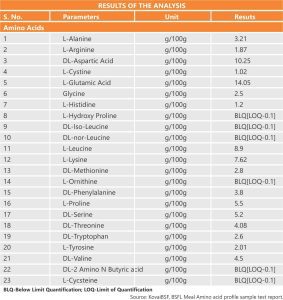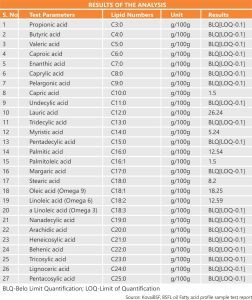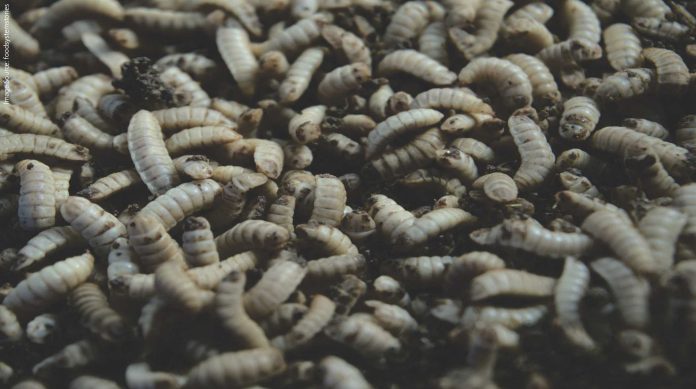

In recent years, the aquaculture industry has experienced tremendous growth, and shrimp farming has emerged as one of the most lucrative sectors in the seafood industry. In fact, the Indian shrimp industry has experienced significant growth over the years. However, the industry also faces several challenges that impact its sustainability and profitability. Post Covid, the scenarios around the world are changing the wind of global trade and economics.
One major challenge faced by the shrimp industry is disease outbreaks in the pond, with viral diseases like White Spot Syndrome Virus (WSSV), Vibrio, and bacterial infections being major concerns. These diseases can cause significant economic losses and have led to the occasional decline in shrimp production.
To ensure the health and optimal growth of shrimp, it is crucial to provide them with a well-balanced diet that meets their nutritional requirements. One such highly beneficial supplement gaining popularity in shrimp feed is Black Soldier Fly Larvae (BSFL) meal. With its exceptional nutritional profile and sustainable production process, BSFL meal offers a promising solution for enhancing shrimp feed and promoting sustainable aquaculture practices.
Superior Nutritional Composition
BSFL meal is an excellent source of essential nutrients that are vital for the growth and development of shrimp. The larvae of black soldier flies naturally possess a remarkable balance of proteins, lipids, carbohydrates, vitamins, and minerals. The protein content in BSFL meal can range from 55% to 60%, making it a superior alternative to conventional protein sources used in shrimp feed, such as fishmeal or soybean meal. The well-balanced amino acid profile of BSFL meal enhances its digestibility, ensuring efficient nutrient absorption by the shrimp.
Antimicrobial Peptides (AMP) in BSFL meal have demonstrated antimicrobial activity against common shrimp pathogens, including Vibrio bacteria and White Spot Syndrome Virus (WSSV). By incorporating BSFL meal into shrimp feed, these peptides can help enhance the shrimp’s immune response, reducing the incidence and severity of diseases.
By utilizing the antimicrobial peptides, which are naturally present in BSFL meal, shrimp farmers can potentially reduce their reliance on antibiotics for disease prevention and treatment. This approach supports sustainable aquaculture practices and helps mitigate the risks associated with antibiotic use.
The antimicrobial peptides in BSFL meal also promote healthy gut microbiota in shrimp. They help maintain a balanced microbial community in the shrimp’s digestive tract, which is crucial for optimal nutrient absorption and digestion. A healthy gut microbiota improves feed utilization efficiency, nutrient assimilation, and overall shrimp health.
Beneficial Lipid Profile
Shrimp require a sufficient amount of lipids for energy, growth, and reproductive processes. BSFL contains a favorable lipid composition, characterized by an optimal ratio of omega 6 and 9 fatty acids. The presence of high Lauric acid in BSFL oil contributes to the overall health and improved immune response of shrimp. BSFL oil also helps to increase the palatability of the feed.


One of the key advantages of using BSFL meal in shrimp feed is its high digestibility. The larvae go through a natural enzymatic breakdown process, which enhances nutrient bioavailability. Shrimp readily assimilate the nutrients from BSFL meal, leading to improved growth rates and feed conversion efficiency. Additionally, BSFL meal offers excellent palatability, attracting shrimp to consume feed more readily and minimizing wastage.
Sustainable and Environmentally Friendly
BSFL meal represents a sustainable alternative to conventional protein sources in shrimp feed. The larvae are reared on organic waste materials, such as food scraps, agricultural byproducts, and other degradable, which significantly reduces the environmental impact associated with aqua feed production, thus preserving marine resources.
Sourcing, Availability, and Price of BSFL
The production and processing of Black Soldier Fly Larvae (BSFL) is relatively a new industry in India, but its potential applications are extensive. Urban India generates approximately 42.0 million tons of solid degradable waste annually. If we consider the inclusion of industrial wet waste, the amount of waste to be processed gets exponentially high. BSFL has the capacity to process this waste, reducing the effort required for proper disposal and avoiding landfill, converting quickly and efficiently into nutritional biomass as a bio-fertilizer.


The BSFL production industry is still emerging both within the country and abroad. As the market demand for the product grows, production will be further improved to meet the needs.
Currently, the pricing of BSFL meal in India is comparable to fishmeal. This makes it convenient to replace a certain percentage of fishmeal with BSFL meal to harness the health benefits that BSFL offers. The feed industry can consider incorporating BSFL meal as a supplement with as low as 2.5% inclusion in shrimp feed, which has proven results.
Sourcing BSFL meal in India has become a viable option, as several prominent players are emerging in the industry. The pricing of Indian BSFL meal is becoming increasingly competitive compared to imported alternatives. Considering the dual problem that the BSFL industry helps to tackle, it is indeed an opportune time for the feed industry to support and collaborate with BSFL producers to foster the growth of this industry in India.
It is important to note that the quality of insect protein, such as BSFL protein, is dependent on the species (gene) of the insect, while the fatty acid profile is influenced by the feed substrate. This implies that regardless of the substrate on which the BSFL larvae are reared, the quantity and quality of protein remain relatively unaffected. However, the fatty acid profile, including the availability of specific fatty acids, is influenced by the substrate in which the BSFL is reared.
This variability provides an opportunity for nutritional manipulation. By adjusting the substrate, it is possible to increase the content of beneficial fatty acids such as EPA and DHA. This flexibility allows for the production of BSFL meal with desired nutritional qualities, making it a valuable ingredient for aqua feed formulation.
Feed Formulation using BSFL meal
As per the present research data, whole BSFL (with fat) inclusion of 2.5 to 5% (i.e., as a fish meal replacement of 10-20% in a 25% fishmeal formulation in shrimp feed) of the total feed, helps in improving immunity against viral infections like Vibrio. If we are going to replace FM with defatted BSFL meals then upto 60% of the FM can be replaced with BSFL meal (i.e., upto 15% inclusion of BSFL meal in the total shrimp feed). This takes care of the balanced nutrition required for the shrimp without any negative effects.
There is a pressing need to develop a new matrix and parameters for feed formulation that specifically incorporates the unique nutritional characteristics and bioavailability of BSFL. It has been observed that BSFL nutrition has distinct and promising effects on the overall health, feed conversion ratio (FCR), and taste of the final shrimp product. Future research in the field of BSFL application is essential to explore its full potential.
Conducting more trial-based experiments and re-evaluating feed formulation matrices can unlock the true benefits of using BSFL as an ingredient. There is a clear gap that requires attention, and addressing this through localized trials is crucial.
With the advancement and maturation of the BSFL industry, along with increased field research, one major advantage of BSFL farming in comparison to the use of wild-caught fish for fishmeal production is the ability to control and regulate the traits of BSFL under controlled farming conditions. Unlike wild-caught fish, which have inherent variations and unpredictable characteristics, BSFL can be cultivated and managed to ensure consistent and desired traits for optimal feed production.
Conclusions
The inclusion of BSFL meal in shrimp feed provides notable benefits in nutrition, disease resistance, growth performance, and sustainability. As the price and volume of BSFL meal emerged to align with the industry’s needs, it is crucial to explore its potential as a supplement in the shrimp feed industry. Utilizing BSFL meal can effectively tackle the industry’s current challenges while advancing sustainable aquaculture practices.
In the upcoming issues, we will delve into other various promising applications of BSFL in the feed sector.
References are available upon request.













